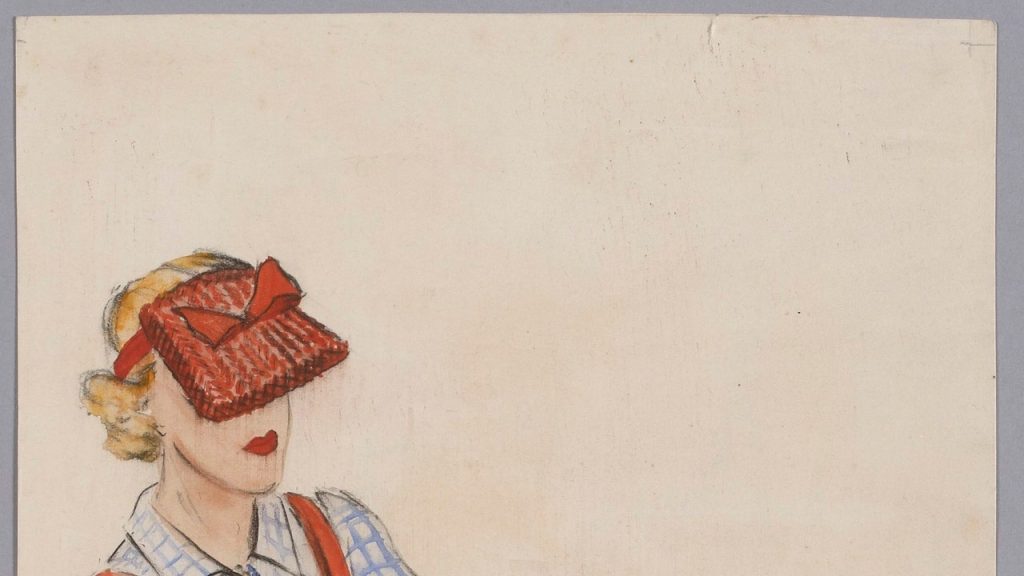The Palais Galliera exhibition curated by fashion historian Olivier Giron showcases the evolution of beach dressing from the 19th century to the present day. The exhibition explores how societal norms and technological advancements have influenced the clothing choices of women engaging in outdoor activities, particularly at the beach. The focus is on the changing relationship between the female body and beauty standards, as well as the emancipation of women through fashion. The show highlights the development of new fabrics that advanced flexibility and durability, paving the way for the evolution of sportswear and its integration into mainstream fashion.
The 19th century saw women wearing promenade dresses and hats for outdoor activities in an era where class and privilege played a significant role in determining fashion choices. The exhibition showcases attire intended for activities such as cycling, golfing, and swimming, with a strong emphasis on beachwear and its significance in defining what women were allowed to wear and do in society. The exhibition curator, Olivia Giron, delves into the sociological changes that have shaped three centuries of fashion, particularly those related to the liberation of women and their bodies. The show also highlights the role of technology in influencing fashion, with a focus on newly developed fabrics that revolutionized the comfort and flexibility of clothing.
The evolution of beach dressing is depicted through ensembles from various decades, including the 1910s, 1930s, 1960s, 1980s, and 1990s, showcasing the progression towards clothing that molds closer to the body and offers maximum mobility. Designers such as Paul Poiret, Schiaparelli, Pierre Cardin, Claude Montana, and Corinne Cobson showcase how sportswear became a dominant force in fashion culture, influencing not only how we dress for physical activities but also shaping mainstream fashion trends. The exhibition culminates in the 21st century, where athleticism and sportswear collaborations with brands like Miu Miu and Nike x Sacai have become integral to contemporary fashion.
The exhibition at Palais Galliera is not only a celebration of the evolution of beach dressing but also a reflection on the societal changes and technological advancements that have shaped fashion over the centuries. By examining the changing relationship between the female body, beauty standards, and clothing choices, the exhibition sheds light on the emancipation of women through fashion. The integration of newly developed fabrics that enhance comfort and flexibility in clothing has played a crucial role in the evolution of sportswear and its integration into mainstream fashion, showcasing how fashion has adapted to the needs and preferences of women engaging in physical activities.
The exhibition curated by Olivier Giron offers a comprehensive exploration of the history and significance of beach dressing, highlighting the evolution of clothing for outdoor activities over the centuries. By focusing on the changing societal norms, technological advancements, and designer contributions, the exhibition provides insight into how fashion has adapted to the changing needs and preferences of women engaging in physical activities. The emphasis on beachwear and its role in defining what women were allowed to wear and do in society adds a sociological dimension to the exhibition, showcasing how fashion has influenced and been influenced by the empowerment of women through clothing choices.
Overall, the exhibition at Palais Galliera serves as a visual narrative of the evolution of beach dressing, from the 19th century to the present day, highlighting the intersection of fashion, history, technology, and societal norms. By showcasing ensembles from various eras and designers, the exhibition underscores the transformative power of fashion in shaping the way we dress and move, particularly in the context of sports and outdoor activities. The celebration of athleticism and sportswear collaborations in contemporary fashion further emphasizes the evolving role of clothing in empowering women and reflecting societal changes in attitudes towards femininity and beauty standards.


